
The glass making process is an intricate but interesting one that has been perfected over the years, thanks to improvement in manufacturing techniques and technologies. The history of glass bottle manufacturing dates back to 100 BC, that was the first time the first glass bottle is believed to have been made in Asia.
The modern glass bottle making enterprise owes its origins to the early 1600s when North American settlers built the first glass-melting furnace in Jamestown. The automatic glass-blowing machine made its first appearance in 1880; the industry has never looked back since then.
To properly understand how glass bottles come to be, we need to first look at the raw materials. The point where they are turned from crude forms into the shiny and elegant containers at the end of the process.
Major Types of Glass Used to Make Bottles
Two main types of glass are used to make glass bottles. They include the following:
Borosilicate Glass
This is the type of glass that is composed of boron trioxide and silica as the main constituents during its formation. Borosilicate glass is ideal for glass bottles because of its very low coefficients of thermal expansion. In a nutshell, this property makes them more resistant to thermal shock compared to normal glass types. The maximum temperature it can withstand is in the region of 165°C.
Treated Soda-Lime Glass
Soda-lime glass is the most common type of glass used in the bottle making process. It is made out of silica, soda, and lime in conjunction with other chemicals that serve different purposes. The main reason why soda-lime glass is widely used is that it is cheap to create and is exceptionally hardy and durable.
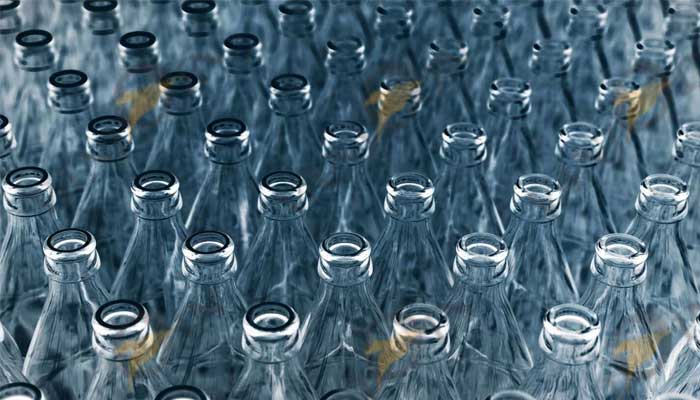
Raw Materials and Their Preparation
The main ingredients used in making glass bottles are sand soda ash, limestone, and cullet. Sand is by far the most important raw material as it provides the foundation of the container. It is what determines the hardness and the durability of the bottle. Silica, a component of sand, makes up about 70% of the glass bottle, and it affects the melting point of the final product. More silica means a high melting point and vice-versa.
Soda ash acts as the fluxing agent. It is the ingredient that lowers the melting point silica to bring it down to manageable levels.
Cullet refers to the pieces of glass that are brought back into production to create new glass bottles. It is recycled glass. Cullet has become a significant component in the glass making process these days since companies are forced to adhere to new environmental regulations. They are crushed into tiny pieces and injected back into the melting furnace to create new raw materials.
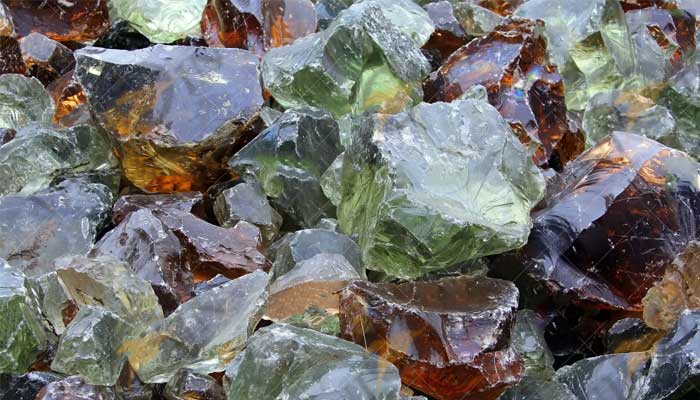
Glass Making Process
The processes of manufacturing glass may vary slightly from manufacturer to manufacturer. But the processes that lay the foundation of all glass bottles are the same. The following are the five main steps that it takes for raw materials to be converted into a glass bottle.
Batching Process
The batching process refers to the continuous feeding of raw materials into the furnaces. Since the furnace has to keep running continuously, the raw materials are fed into it at a controlled pace by a conveyor belt. The raw materials are correctly mixed in the right ratios for uniformity purposes.
The conveyor belt has magnets in different sections that pick out any metal objects from the raw materials as that could become an impurity. Iron, for example, does not burn off. If it is fed into the furnace alongside the other raw materials, the final product will be full of specks. Once the raw materials enter the furnace, the next step is triggered immediately.
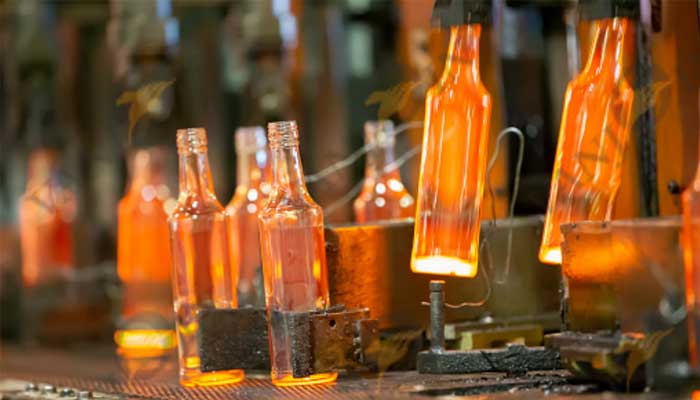
Hot End Process
This is the section where a lot of heat is involved. It is the point where the raw materials from the batching process are subjected to extreme heat to allow molding. Three main processes happen under this section;
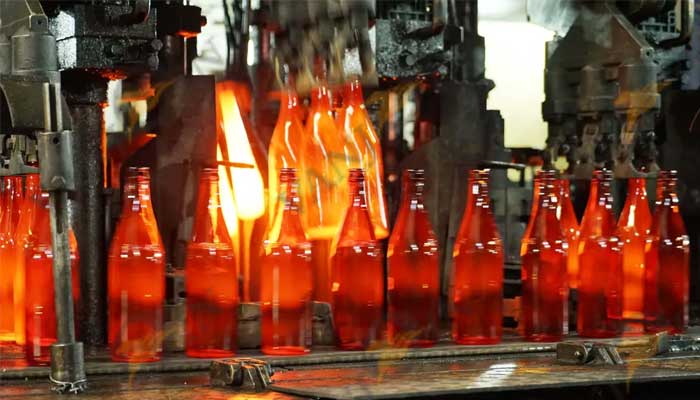
Melting
The raw materials are heated and melted down to create a viscous mass. It begins by all the water content within the materials evaporating off, followed by the burning off of any organic matter. Anything that is left behind gets melted down. A balance has to be struck between the air going in and the fuel used for the process to be smooth. The most commonly used fuel here is natural gas, heavy fuel oil, or petroleum gas. The cost of the fuel used usually contributed to about 40% of the final glass bottle product.
Soaking
The second process is called Soaking, and it involves the continued heating of the furnace for 3-8 hours to ensure that anything that was not melted down in the first process is turned into a viscous mass. To achieve this, peak temperature has to be maintained for that stipulated duration of time.
Another important action that is undertaken here is the eradication of any air bubbles trapped in the melted mass. Air bubbles are not good as they create weaknesses in the glass, making them unusable.
Blow Molding Process
The still red-hot viscous mass is transferred to the press and blowing machines through what is called The Feeders. The feeders are openings under the furnace that are opened like taps to let out the molten mass into the blower machines. These globs are cut before dropping down, forming what is called Garbs.
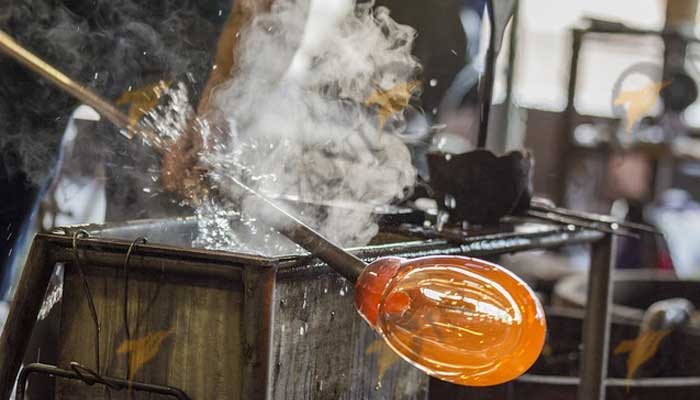
Once the garbs enter the blower, the air is blown into them once they hit the molding machine. The hot air creates shape through the garb like a balloon. Hot air is used so that the garbs do not suddenly cool down and solidify before the desired shape is attained.
It is at this point that the bottle gets its shape. Once that happens, it is released from the mold and sent over to the next stage
Hot End Coating
Hot end coating is a process that adds a thin layer of tin to the glass to give it a durable strength that makes it a bit harder to break. Without this layer, glass bottles would be too brittle, cracking at the slightest impact. The process of applying the tin coat occurs in temperatures of about 350°C.
Another important process that is also performed in this stage is called Annealing. This is the process where the inside and the outside of the bottle are cooled evenly. Failure to perform this process causes the outside part of the bottle to cool faster than the inside, and this creates a lot of stress on the bottle, causing it to crack on the spot.
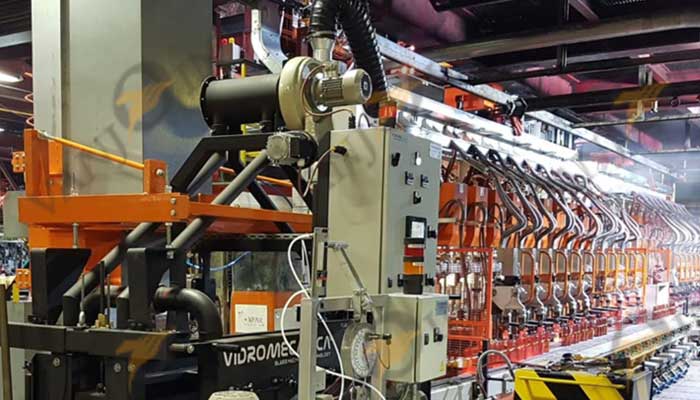
Cold End Process
Once the now fully formed glass bottle cools down, it is inspected. The inspection aims to look for any specks that may have escaped through; any air bubble that may be trapped in the glass or any deformities. Any glass bottle that is found to have any of the above is set aside and returned to the batching process to repeat the whole process again.
Inspection is taken very seriously since a bad batch can destroy a company’s standing with its clients. Many glass manufacturers use both automatic and manual methods of carefully checking the bottles for any problems. In the automatic method, the bottles are put on a conveyor belt that passes them through a detector programmed to mark or single out bottles that have the slightest deformity. Manual methods involve a line of workers who physically check the bottles one by one before sending them to packaging.
The ones that pass the inspection test are branded, if needed, and packaged into shipping boxes. The packaging and branding processes vary with each manufacturer. For most, it is done by machines to avoid breakages if handled by people who are vulnerable to getting tired.
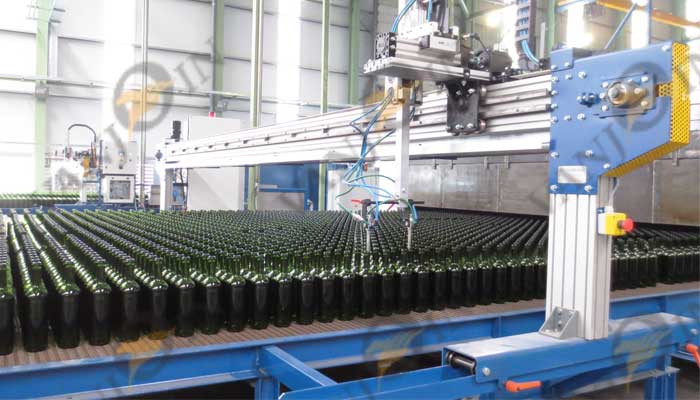
Environmental Impact of Glass Making
The use of natural raw materials for glass, although lauded, has had a negative impact on the environment. Sand has always been assumed to be the most abundant material on the planet, but that is no longer the case. As it becomes rarer, companies are now turning to sand harvesting from ocean floors. This is destroying the habitats of marine life.
Glass products are also serious pollutants; the fact that they take millions of years to decompose makes matters worse. For this reason, manufacturers around the globe are mandated to adhere to practices that leave the least impact on the environment.
The leading strategy that has borne fruits so far is recycling. Glass products, fortunately, can be recycled as many times as possible without losing any of their qualities. This has reduced sand mining significantly and saved companies a fortune since the materials used in recycling are brought back by people virtually for free.
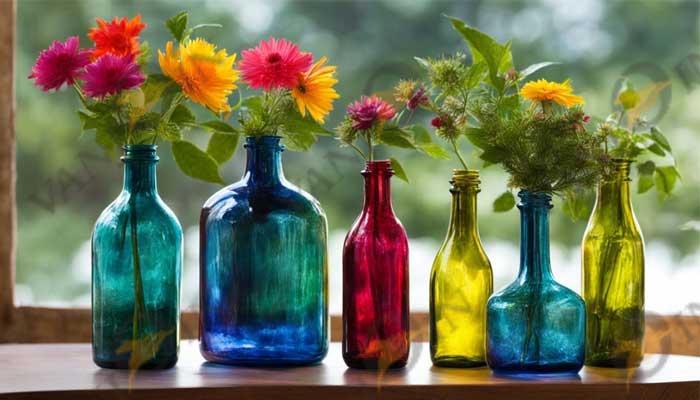
Conclusion
Glassmaking is all about ingenuity, and as the demand for glass bottles goes up, so has the manufacturing. Glass bottles are essential in the food and beverage industries as well as the alcohol and fragrance industries. Therefore, next time you sip your favorite beer, take your time to appreciate the efforts that were injected into creating that marvelous piece of art in your hand.